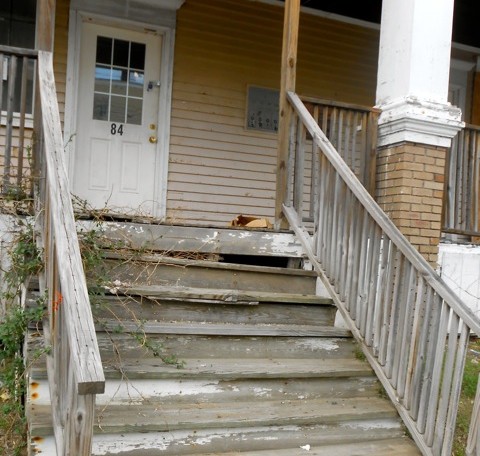The dangers of lead poisoning were laid bare in Flint, Michigan, where contaminated water exposed thousands of children to the dangerous neurotoxin — but Flint is not alone.
A 2016 investigation by Reuters found nearly 3,000 areas with lead poisoning rates at least double of Flint at the peak of its crisis, caused by the remnants of lead once used in paint, water pipes and gasoline.
And everywhere it’s found, even at levels lower than those found in Flint, it has a profound and permanent effect on the health of children, affecting the development of their brains and nervous systems. It costs the United States dearly, too — billions of dollars in spending on health care, special education and crime.
It’s a massive problem that is stunting young lives. Beating it will require a similarly massive response.
U.S. Rep. Jared Golden, D-2nd District, unveiled his plan last month, calling for $12 billion to be spent nationwide over five years on lead poisoning. Among other initiatives, his plan would remediate about 220,000 homes a year.
Given the scope of the problem, it is a relatively small amount of funding, but Golden is counting on it being low enough to garner broad support.
Julian Castro, a presidential candidate and former housing and urban development secretary, wants to spend $50 billion over 10 years to remove lead paint and pipes. Rep. Tim Ryan, D-Ohio, has proposed total spending of $100 billion.
In 2000, a Cabinet-level study found that it would cost about $250 billion in today’s money to eliminate all lead paint and up to $50 billion to replace lead pipes. Mitigating contaminated soil would take billions more.
The price tag is significant, and the country has a lot of priorities to consider. But because of the nature of the lead problem, there is an opportunity for a bipartisan initiative that does far-reaching good.
First, lead is found everywhere. While contamination is most frequently found in the Midwest and Northeast, it’s really everywhere — in rural Alabama and urban Baltimore, in a Missouri mining town and the small cities of Lewiston and Auburn, Maine. It is estimated that kids in at least 4 million households are exposed to high levels of lead.
And even at lower levels, the effect on kids is devastating and costly.
According to an investigation from the Maine Center for Public Interest Reporting, from 2003 to 2013, an average of 130 Maine kids, primarily from low-income households, were diagnosed with lead poisoning, lowering IQs and causing behavioral problems, among other health risks.
Another study found that Maine kids born in 2008 can as a whole expect to earn nearly $240 million less (in 2008 dollars) throughout their lifetimes because of the impact of lead on brain function and learning ability.
Faced with these facts, Maine’s elected officials have stepped up. Laws requiring lead testing and abatement were passed recently and signed by Gov. Janet Mills. Those were necessary steps in a state where nearly 30 percent of the housing was built before 1950, when lead paint and pipes were in wide use.
But lead poisoning is a nationwide problem that deserves a nationwide response. Too many American kids are being poisoned in their own homes, with disastrous effects for their communities.
The only reasonable way to stop the poisoning is to renovate the homes on a large scale — and with each child who grew up to be healthy and productive, we’d be paid back over and over again.
Send questions/comments to the editors.



Comments are no longer available on this story